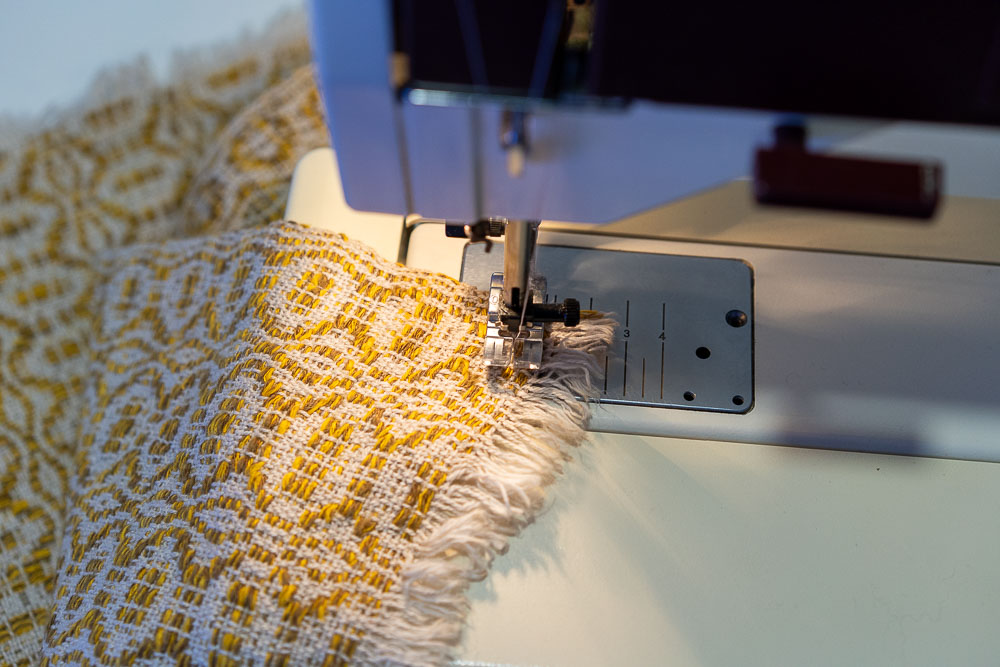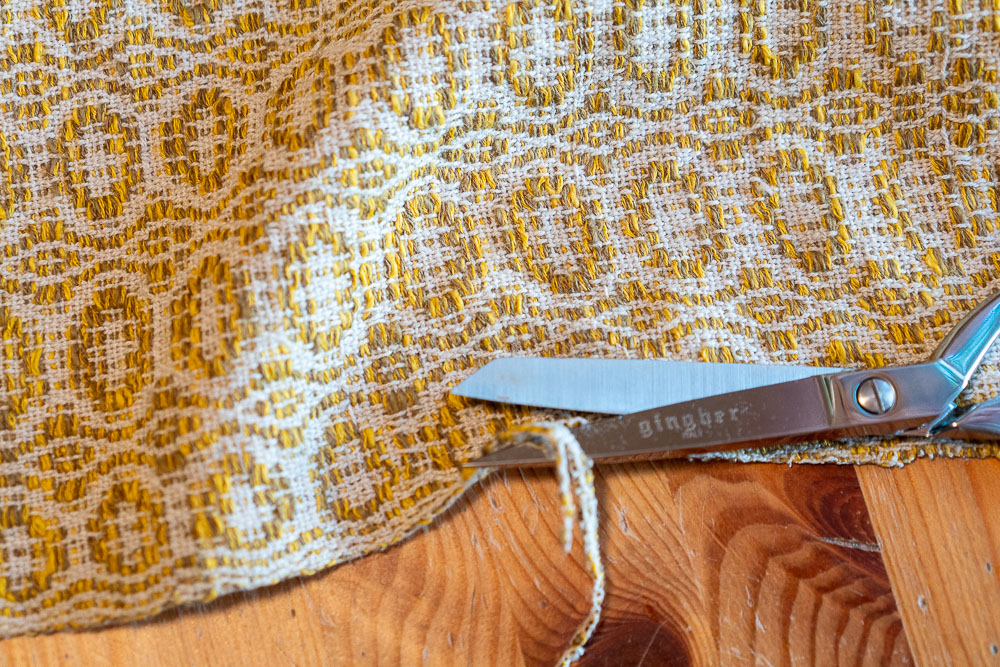This blog is an excerpt from “Finishing off the Loom”, a Quickbite mini-lesson released as part of our Creative Finishes class. The complete lesson and class are available to Handweaving Academy subscribers.
If you happen to have a sewing machine, you can quickly secure your weaving edges by staystitching about 1/2 to 1 inch around the perimeter or the raw edge of the woven item, then trim the edges and pull the warp or the weft to make short fringe.

This technique is easy and ideal for small swatches, samples, and anything that has to be finished in a large quantity as quickly and efficiently as possible, like multiple sets of table linens. (This is also a lifesaver for those items with less-than-perfect selvedges.)You can stitch either before or after wet finishing your item.
However, unless you are a prolific sewer, you might not have a selection of thread colors that perfectly match every woven item. And purchasing a whole new spool to match a single napkin can be expensive and inconvenient.
But there is a trick! Instead of matching the exact color of the project, you can often match the color value in black, white, or grey. In most projects, the thin sewing machine thread in the closest value will almost entirely disappear on the handwoven cloth.

In the photo above, the black thread and the white thread show on this overshot sample, but the grey options almost disappear, even though the sample is not grey itself. Either grey would work fine for staystitching.
In the sample below, the black thread almost disappears entirely, so for this sample, I would choose the black thread.

After you select your thread, use your sewing machine to stitch where you want to keep your weaving from unraveling, about 1/2-1″ away from the edge.

If you want to add fringe to the sides of the cloth, cut the selvage off and pull the warp ends off a few at a time.

The sewing machine stitch length should be in the middle of the dial, not too short but not a long basting stitch either. If the item will be machine-washed and used heavily, sewing two lines of stitches right next to each other will provide extra stability.
It’s a technique that almost feels like cheating, but it works well for samples, napkins, table cloths, and anywhere you need a quick and simple way to prevent your weaving from unraveling.

From the course Creative Finishes:

Slanted Hemstitch – How to make a decorative hemstitch with extra flair

Adding Supplemental Fringes – how to add more texture and color to your fabulous fringe
